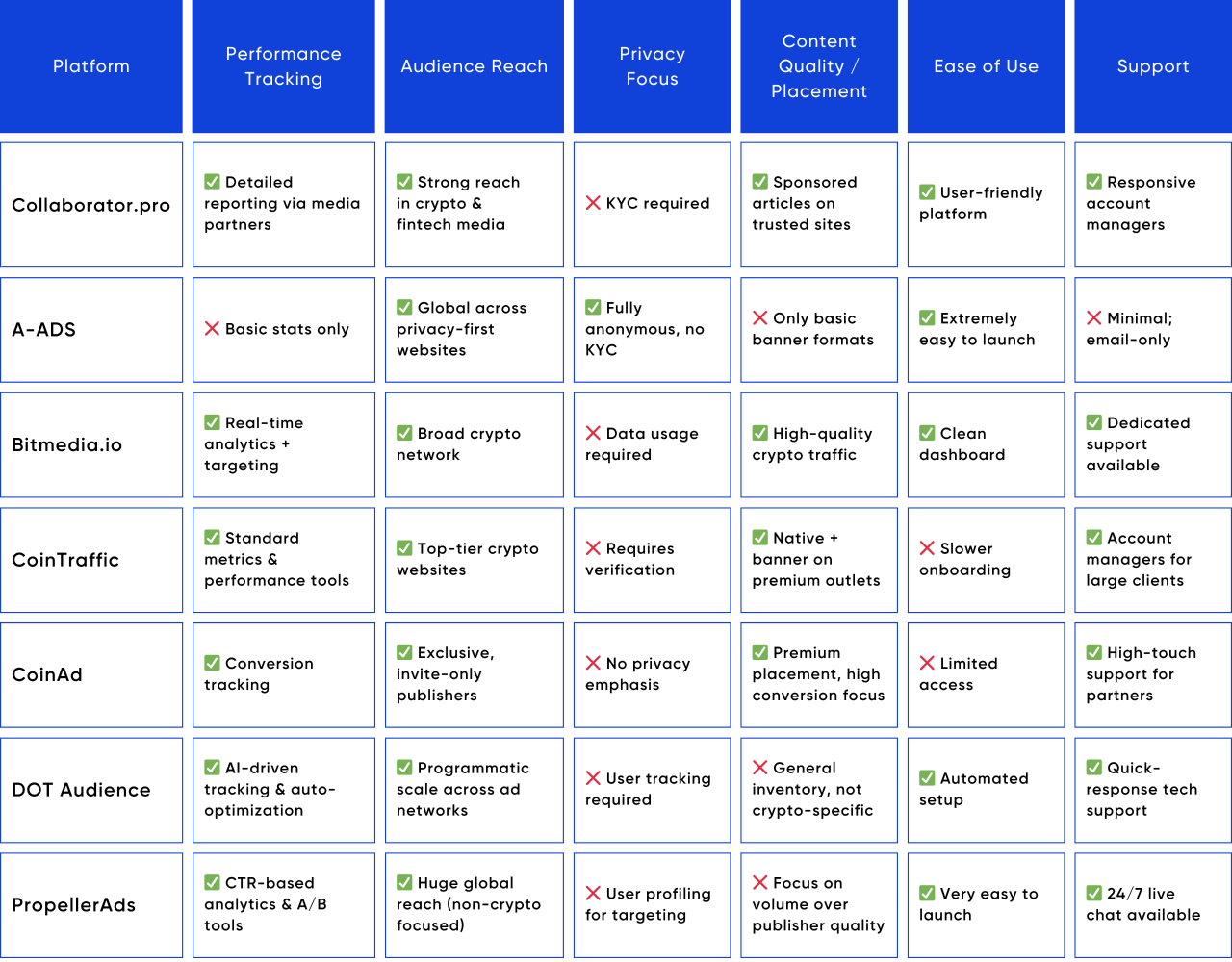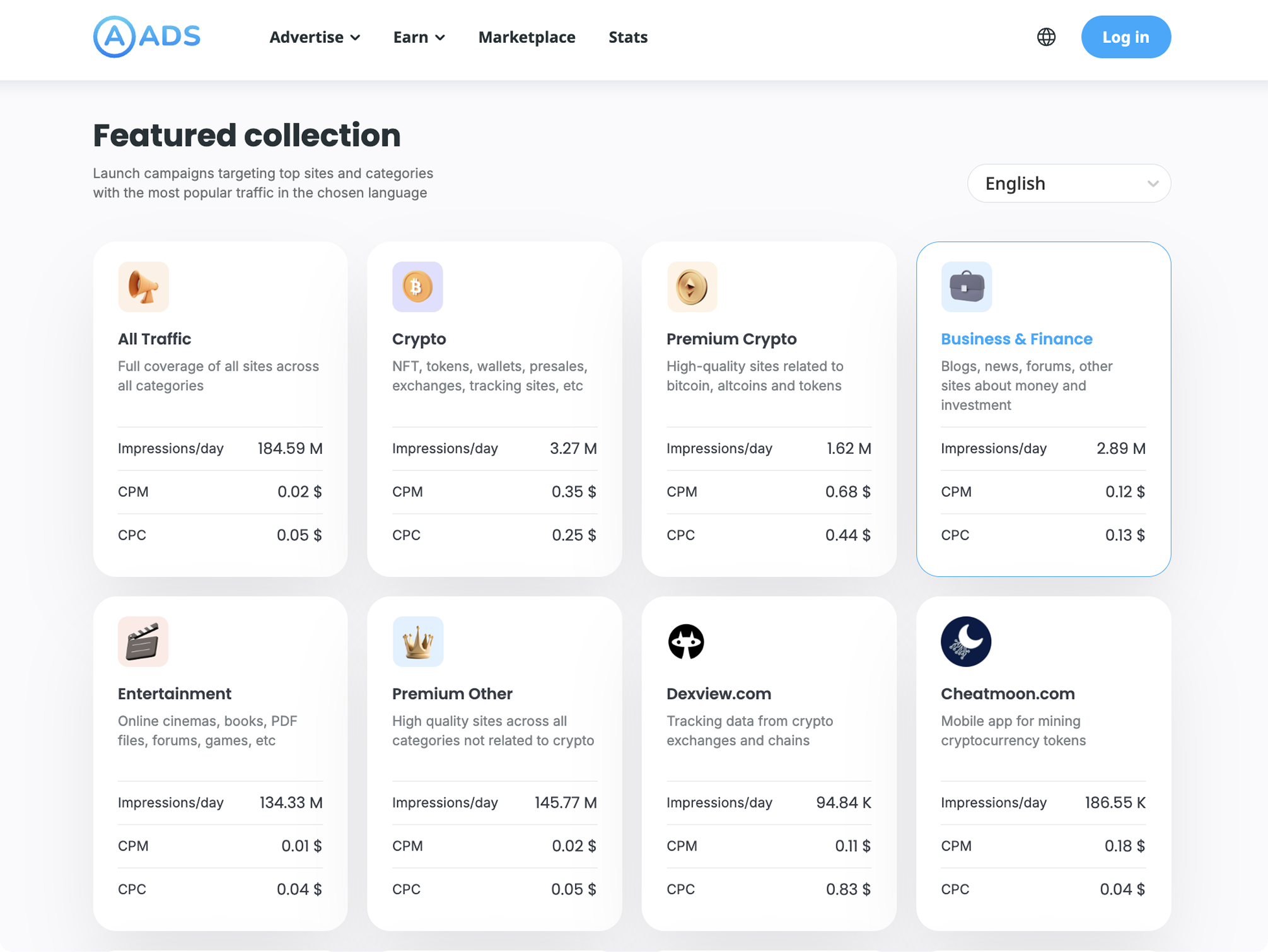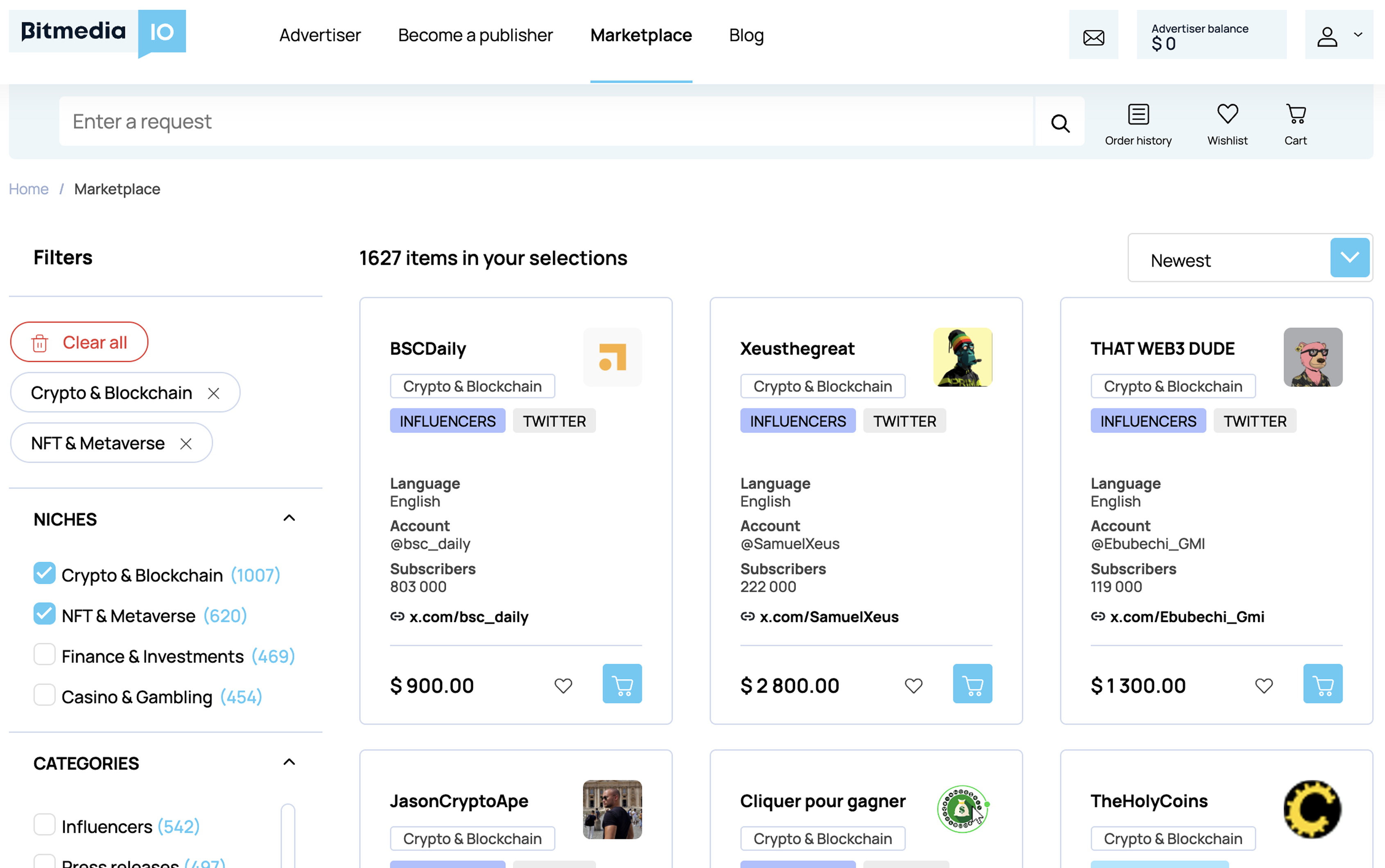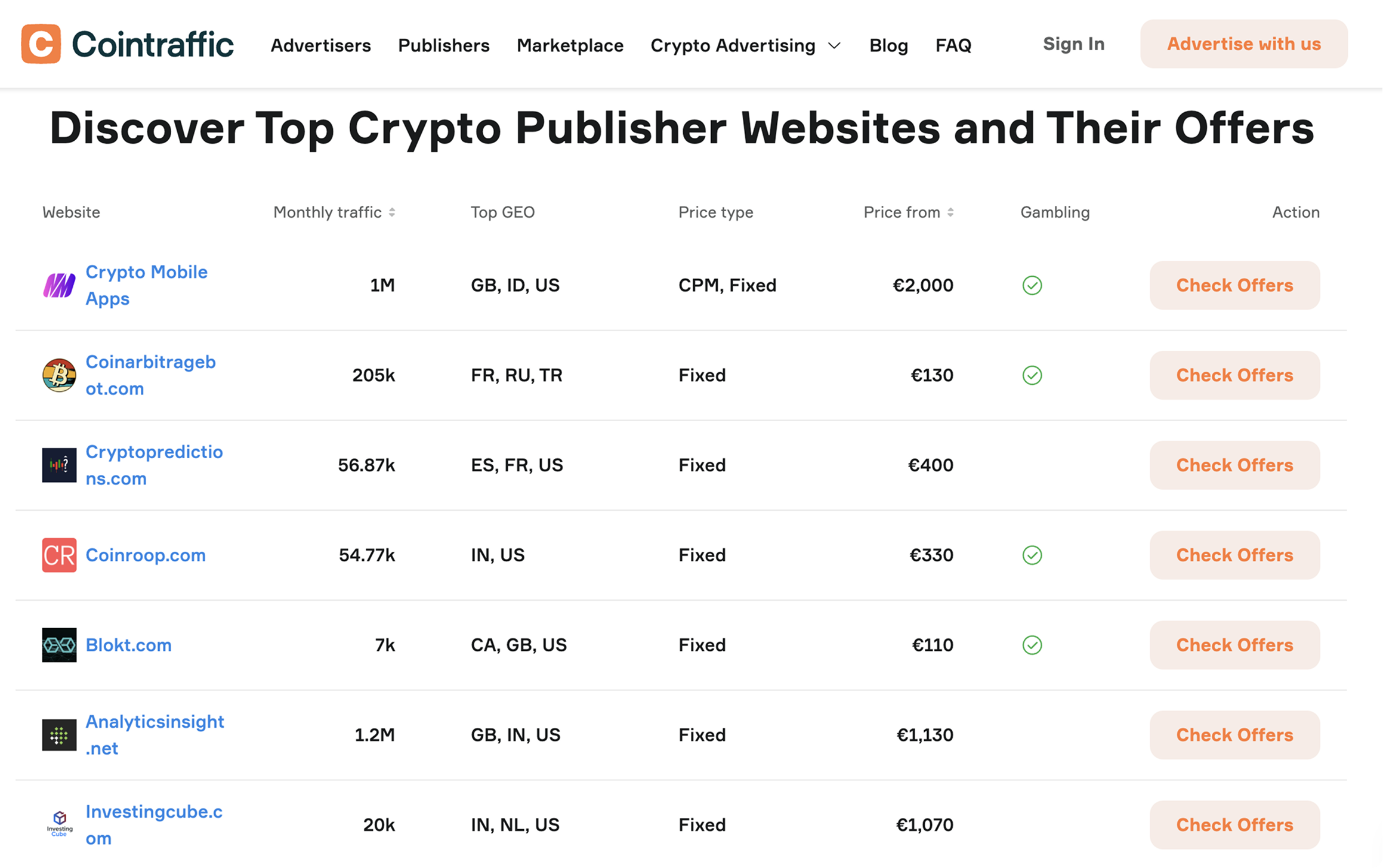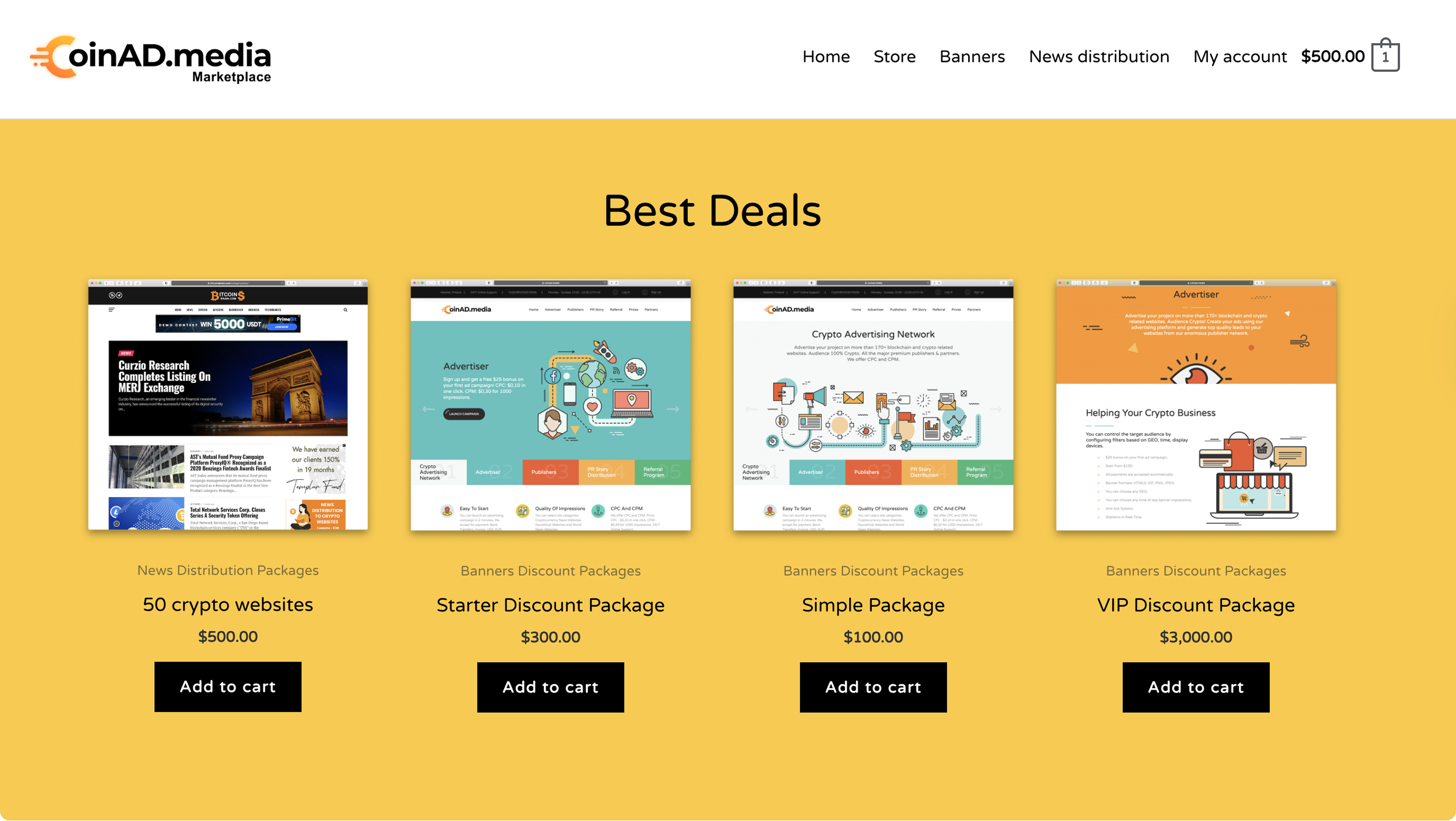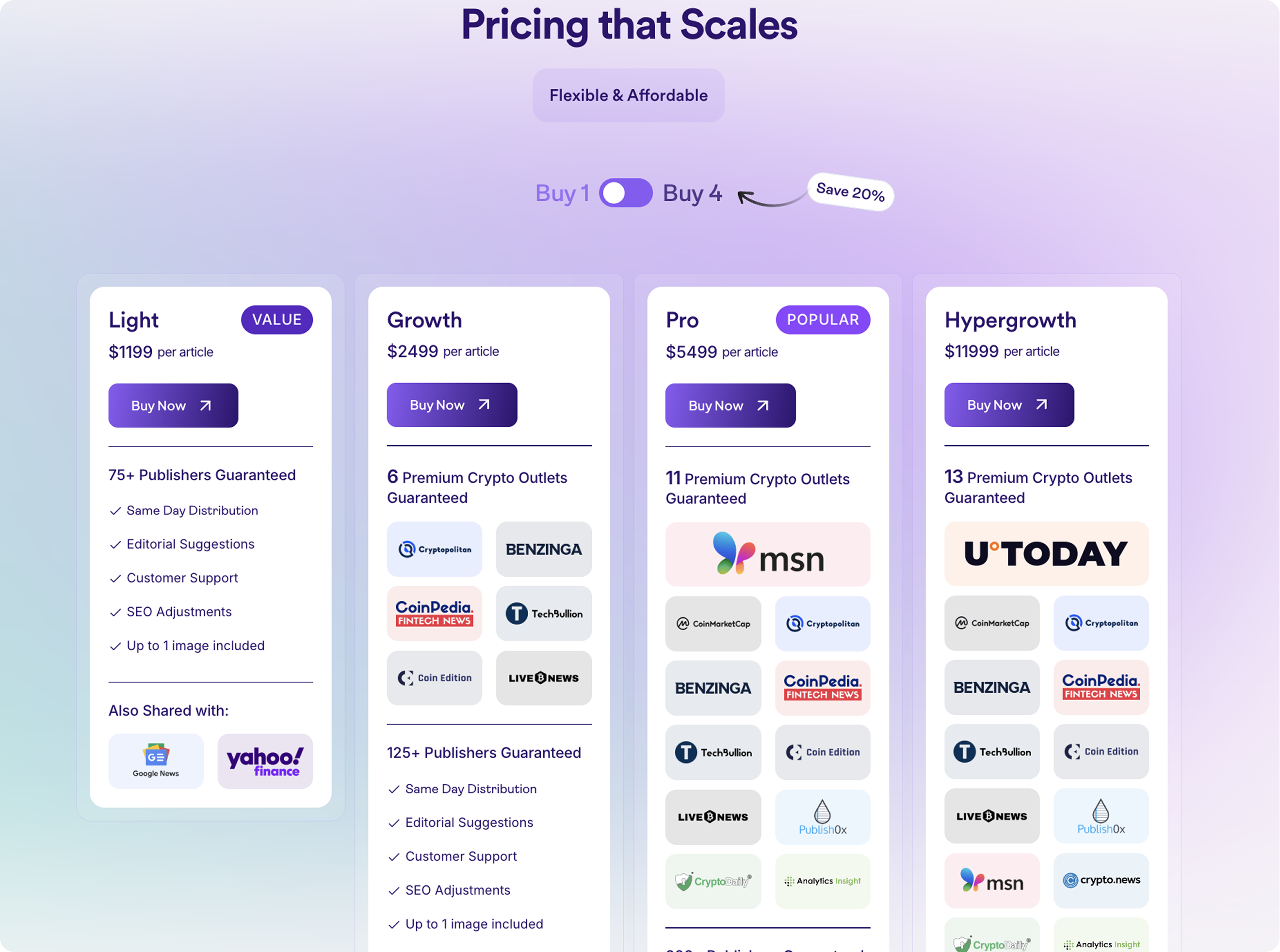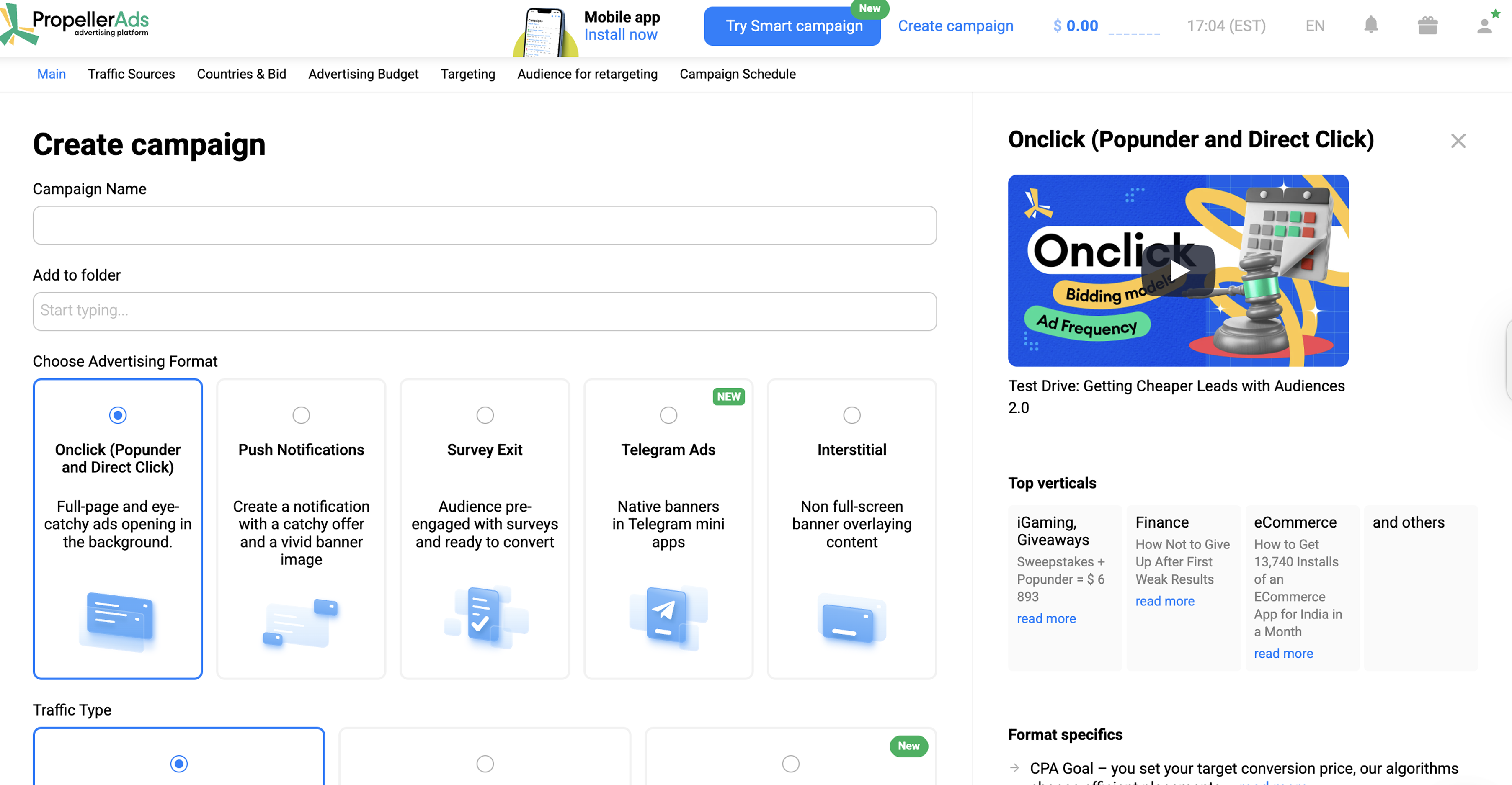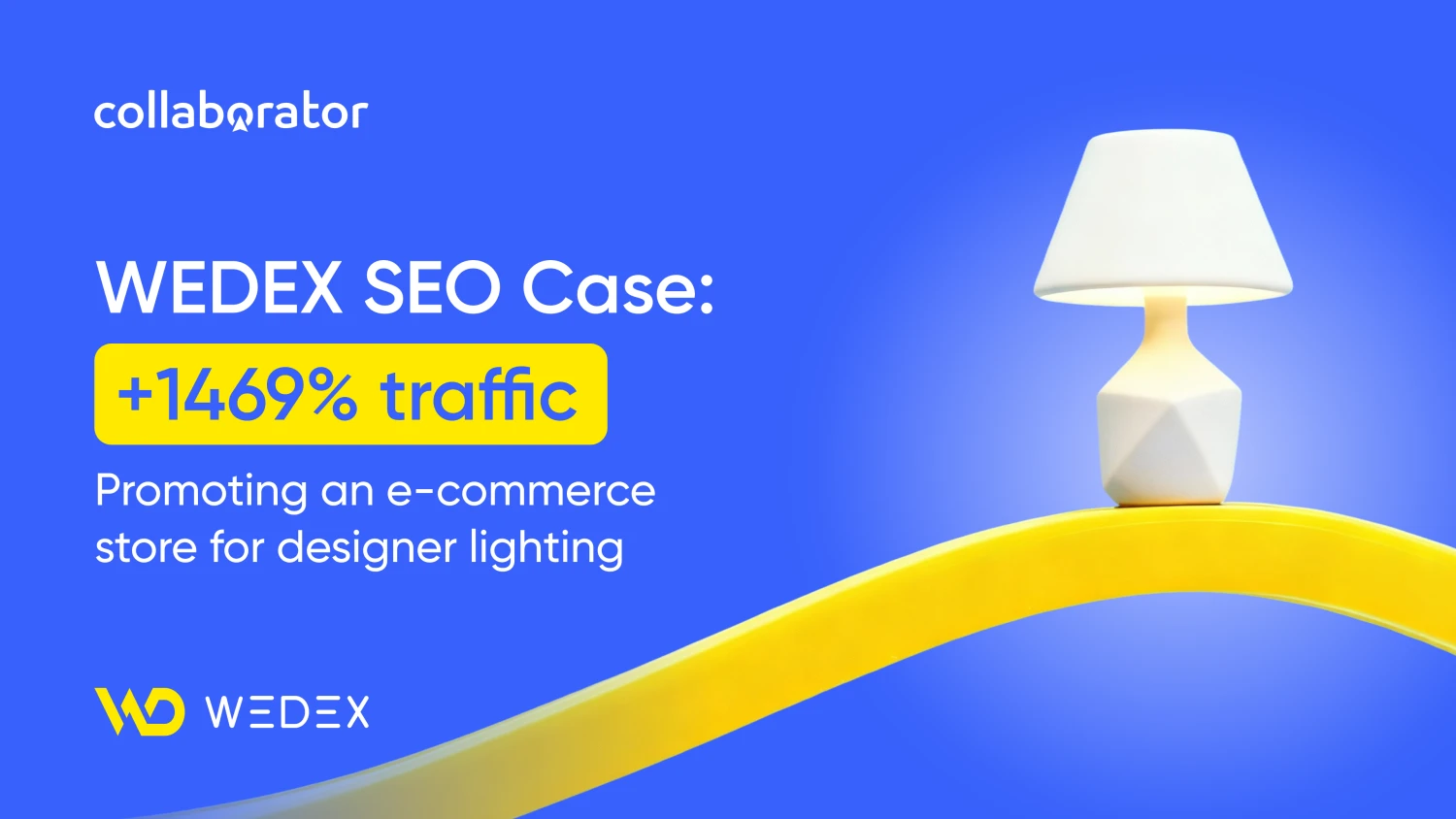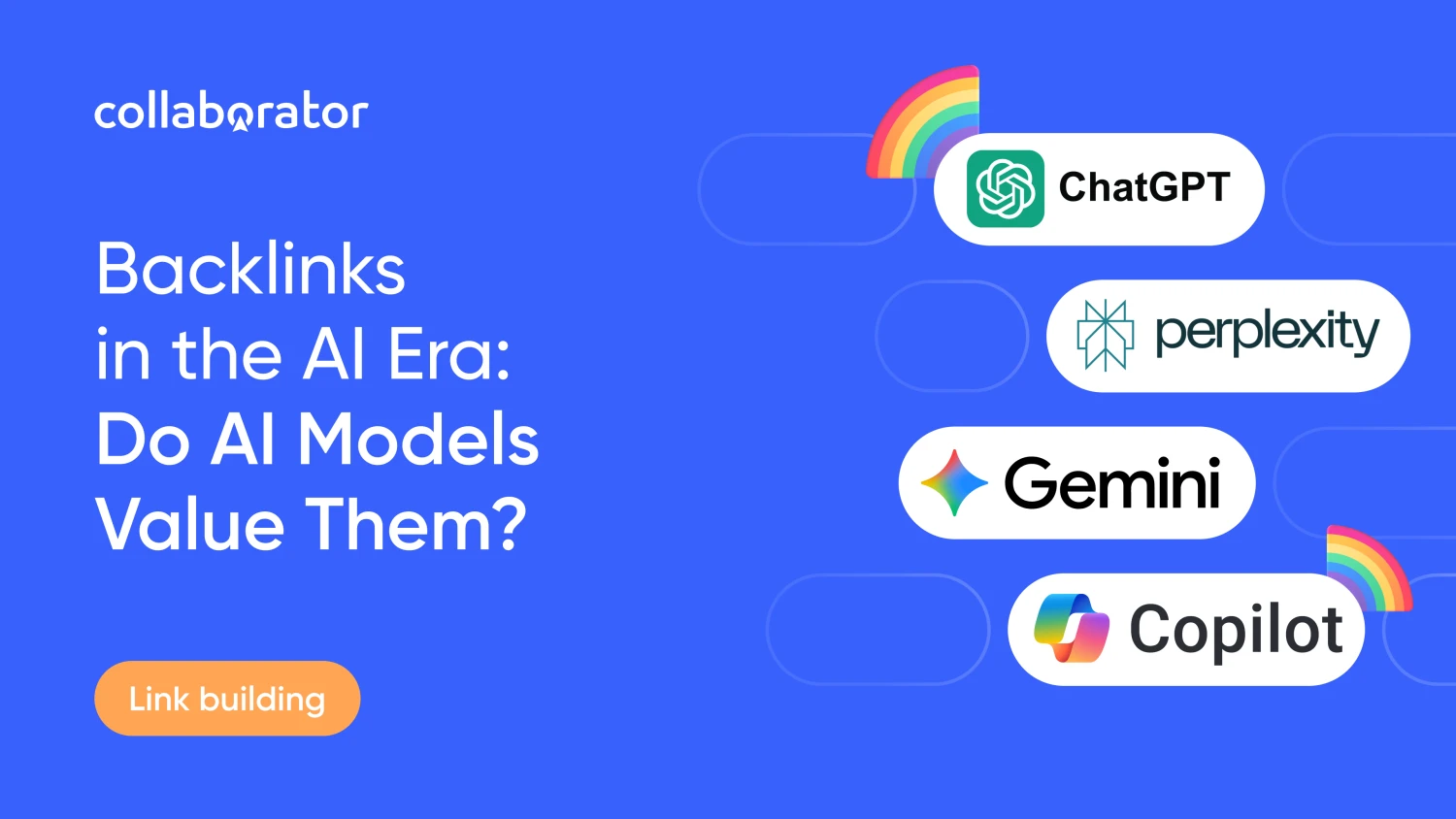
Crypto marketing is a noisy game. With new crypto projects launching daily and attention spans shrinking, standing out takes more than just a whitepaper and a few tweets. Between ad bans and cautious audiences, visibility is a real challenge.
That’s where paid crypto advertising comes in.
It helps boost brand awareness, drive real lead generation, and get your name in front of the most relevant buyers, whether you're prepping for crypto conferences, building your community, or teaming up with a marketing agency. If you want fast results and real reach, it’s time to get strategic.
Benefits of Crypto Advertising
Crypto ads give your project a significant edge in a crowded market. Unlike slow organic growth, paid promotion delivers immediate visibility to correct users, and often works best when paired with long-term strategies like guest posting on authoritative sites.
Key benefits include:
- Fast lead generation. Reach potential users, investors, or partners almost instantly. Binance used banner ads on CoinMarketCap to drive thousands of sign-ups in days.
- Advanced targeting. Tailor your campaigns by location, device, interests, and behavior across social media and crypto-specific platforms. Crypto.com promoted its wallet via Reddit Ads to reach DeFi-focused subreddits.
- Boosted brand trust. Appear on credible sites and in high-quality placements that also support link building — improving both visibility and SEO. Avalanche ran native ads on CoinTelegraph and Decrypt to build credibility.
- Analytics & insights. Track performance, test creatives, and optimize in real time. Bitget optimized campaigns in real time using Bitmedia’s geo and device data.
- Scalability. Start small and grow your reach with proven results. StepN started with regional ads, then scaled globally across mobile and display networks.
- Integration with influencer marketing. Combine media buying with curated campaigns through crypto experts. Polkadot combined YouTube shoutouts with banner ads during its parachain launch.
These benefits make paid advertising a go-to for founders, growth teams, and any marketing agency looking to scale quickly and smartly.
Key Platforms for Crypto Advertising
When you hear “ads,” platforms like Google and Facebook probably come to mind first. While these giants aren't built for Web3, they still have a place in crypto marketing — if you know how to navigate their ad policies. Meanwhile, crypto-specific platforms offer fewer restrictions, better audience targeting, and tools tailored to the industry.
Let’s break them down:
Google Ads
With unmatched targeting capabilities (demographics, intent, keywords), Google Ads can deliver high-quality traffic. However, crypto advertisers must meet strict eligibility requirements — especially for financial products and token sales. Advertisers need to follow Google’s rules, which often means showing proof that they’re licensed or approved by regulators in the countries they’re targeting.
Best for: NFT platforms, wallets, or educational portals targeting a broad or intent-based audience.
Watch out: Ads may get disapproved without clear compliance signals (e.g., missing disclaimers, unclear ownership, or risky keywords).
Facebook Ads
Meta platforms (Facebook, Instagram) offer huge reach and powerful retargeting tools. Ads related to blockchain, wallets, and exchanges can work here — but only with full compliance and prior approval. Facebook Ads is used for building awareness and driving community engagement.
Best for: Community growth, mobile app installs, airdrop signups, and retargeting past visitors.
Watch out: Ad review may take longer, and content with “money-making” language or hype can be flagged.
X (formerly Twitter)
This is crypto’s town square. From token launches to meme coins, X is where real-time hype happens. Twitter Ads let you promote tweets, accounts, or trends, making it perfect for crypto experts, traders, and retail investors.
Best for: Token announcements, pre-sale awareness, influencer collabs, and meme-driven growth.
Watch out: High CTR doesn’t always mean conversions — campaigns must be paired with engaging landing pages.
A goldmine for niche targeting. Crypto communities like r/ethfinance or r/altcoin regularly engage with promoted posts when done authentically. Reddit Ads allow detailed interest targeting and work especially well for technical or DeFi products.
Best for: DeFi platforms, L2 networks, technical whitepapers, or AMAs.
Watch out: Native tone and transparency matter — overly promotional copy is often downvoted or ignored.
Crypto-Specific Platforms
Think Coinzilla, Bitmedia, or Collaborator.pro — these platforms are widely used for crypto projects. They support native ads, sponsored articles, and banners across a network of crypto-friendly sites. In other words, crypto ad platforms connect advertisers with the owners of websites and blogs with a cryptocurrency audience. There’s less red tape and a much warmer audience.
Best for: ICOs, token launches, exchange listings, and awareness campaigns within the crypto-native crowd.
Watch out: Some networks offer quantity over quality, so it's key to choose platforms with vetted publishers and analytics tools (e.g., Collaborator.pro for content, Bitmedia for targeting, Coinzilla for banner reach).
|
Platform |
Strengths |
Limitations |
Use Case Example |
|
Google Ads Audience Type: General + investor |
Keyword targeting, large reach |
Strict crypto ad policies |
Lead generation for regulated offerings |
|
Facebook Ads Audience Type: Broad consumer base |
Visual ads, retargeting, Meta ecosystem |
Requires ad approval, policy limits |
Brand awareness, app downloads |
|
X / Twitter Audience Type: Crypto-savvy crowd |
Real-time engagement, promoted trends |
Limited ad formats |
Token launches, influencer amplification |
|
Reddit Ads Audience Type: Niche communities |
Highly engaged subreddits, interest targeting |
Requires authentic tone, limited scale |
DeFi tools, technical product marketing |
|
Crypto Ad Platforms Audience Type: Crypto-native users |
No restrictions, tailored for crypto marketing |
Smaller audiences, mixed quality sites |
ICOs, exchange ads, sponsored content |
Crypto Ad Network vs. Crypto Ad Platform: What’s the Difference?
Both crypto ad networks and ad platforms help you promote your project — but they work very differently.
A crypto ad network is like a matchmaker: it connects advertisers with a wide range of publishers and places your ads automatically across its network. It’s great for reach but gives you less control.
A crypto ad platform, on the other hand, is a self-serve tool. You run the show — choosing where your ads appear, who sees them, and how your budget is spent. It’s made for teams who want precision, more testing of their blockchain companies, and control.
|
Feature |
Crypto Ad Network |
Crypto Ad Platform |
|
Role |
Middleman between advertisers & publishers |
Self-serve tool for advertisers |
|
Ad Placement |
Automated across network sites |
Advertisers manage directly |
|
Targeting |
Basic or broad |
Advanced and customizable |
|
Best for |
Reach and simplicity |
Strategy and control |
|
Example |
Bitmedia, Coin.network |
A-ADS, Adshares |
Top Crypto Advertising Platforms
Not all crypto ad tools are created equal. Some give you full control; others offer broad reach. Below are the most trusted platforms used by crypto projects, marketing agencies, and crypto experts alike. Each brings something different to the table — whether it's privacy, premium placements, or analytics.
Collaborator.pro
A content-driven digital PR marketplace, Collaborator.pro helps crypto projects publish sponsored articles on top-tier media. Very useful for brand awareness, SEO, and credibility.
Pros:
- Direct access to crypto, fintech, and tech publishers
- Transparent pricing and collaboration
Great for strategic partnerships
Cons:
- No banner/display ads
- Manual approval for all publishers
A-ADS (Anonymous Ads)
One of the oldest crypto ad platforms, A-ADS focuses on anonymous, privacy-first advertising. No personal data or KYC required.
Pros:
- True anonymity
- Crypto-only payments
- Easy to set up
Cons:
- Limited targeting
- Fewer customization options
Bitmedia.io
Known for high-quality crypto traffic, Bitmedia offers advanced analytics and retargeting options for performance-focused advertisers.
Pros:
- Detailed targeting (geo, device, interests)
Real-time campaign optimization
Strong lead generation potential
Cons:
- Requires budget to access premium placements
- Some publisher sites may vary in quality
CoinTraffic
CoinTraffic offers banner and native ad solutions across a strong network of crypto-related websites.
Pros:
- Native and banner ad formats
- Trusted by major ICOs and exchanges
- Manual site approvals ensure traffic quality
Cons:
- More expensive than some competitors
- Less flexible than self-serve platforms
CoinAd
CoinAd is an invite-only crypto ad platform with a focus on premium placements and high-conversion traffic.
Pros:
- High-quality publisher network
- Excellent for high-budget campaigns
- Best for crypto marketing agencies
Cons:
- Invite-only: not accessible to everyone
- Less flexible for small teams or startups
DOT Audience
DOT focuses on programmatic crypto advertising with machine learning optimization. Strong on automation.
Pros:
- AI-driven performance
- Multi-format support
- Great for scaling campaigns
Cons:
- May require more setup time
- Less human support
PropellerAds
PropellerAds is a global ad network that supports crypto ads across push notifications, pop-unders, and display formats.
Pros:
- Broad reach beyond just crypto sites
High-CTR ad formats - Affordable entry-level pricing
Cons:
- Push/pop formats can feel intrusive
- Needs careful targeting to avoid irrelevant traffic
FAQs
1. What are native ads vs banner ads in crypto?
Native ads blend in with website content — think sponsored articles or posts on crypto news platforms. These ads feel more organic and are often more trustworthy to users. Banner ads are graphic displays placed in fixed positions, like headers or sidebars. They’re more eye-catching but also more likely to be ignored. Choosing between the two depends on whether you want subtle engagement or high-visibility exposure.
2. What are the minimum budget requirements for crypto advertising?
The minimum budget for crypto advertising varies depending on the platform you use. Some platforms let you start with as little as €5–€10 per day, but to get noticeable results, you’ll usually need to spend at least a few hundred euros a month. Bigger crypto ad networks or sponsored placements often require higher minimums, sometimes starting around €1,000. With Collaborator, you pay a fixed price per publication.
3. What is CPM, CPC, and CPA in crypto advertising?
CPM, CPC, and CPA are common pricing models for crypto advertising networks. CPM means you pay for every 1,000 impressions of your ad, which is great for building brand awareness. CPC charges you only when someone clicks your ad, while CPA means you pay only when a specific action, like a signup or purchase, is completed.
4. What is wallet-based targeting?
Wallet-based targeting is a marketing technique in crypto advertising that uses blockchain wallet data to deliver ads to specific users. Instead of relying on cookies or traditional tracking, advertisers target individuals based on their wallet addresses, transaction history, or on-chain behavior. Wallet-based targeting is mainly used on specialized crypto ad networks and platforms that focus on blockchain data.
Final Thoughts
Whether you're launching a token, scaling a DApp, or promoting your presence at crypto conferences, choosing a proper ad platform is crucial. From community management to precision influencer marketing, the most effective ad strategy can be a game-changer.
Explore platforms that align with your goals — and don’t forget to combine paid efforts with content, community, and long-term strategy.
Crypto advertising isn’t just about impressions. It’s about making the best impression.

